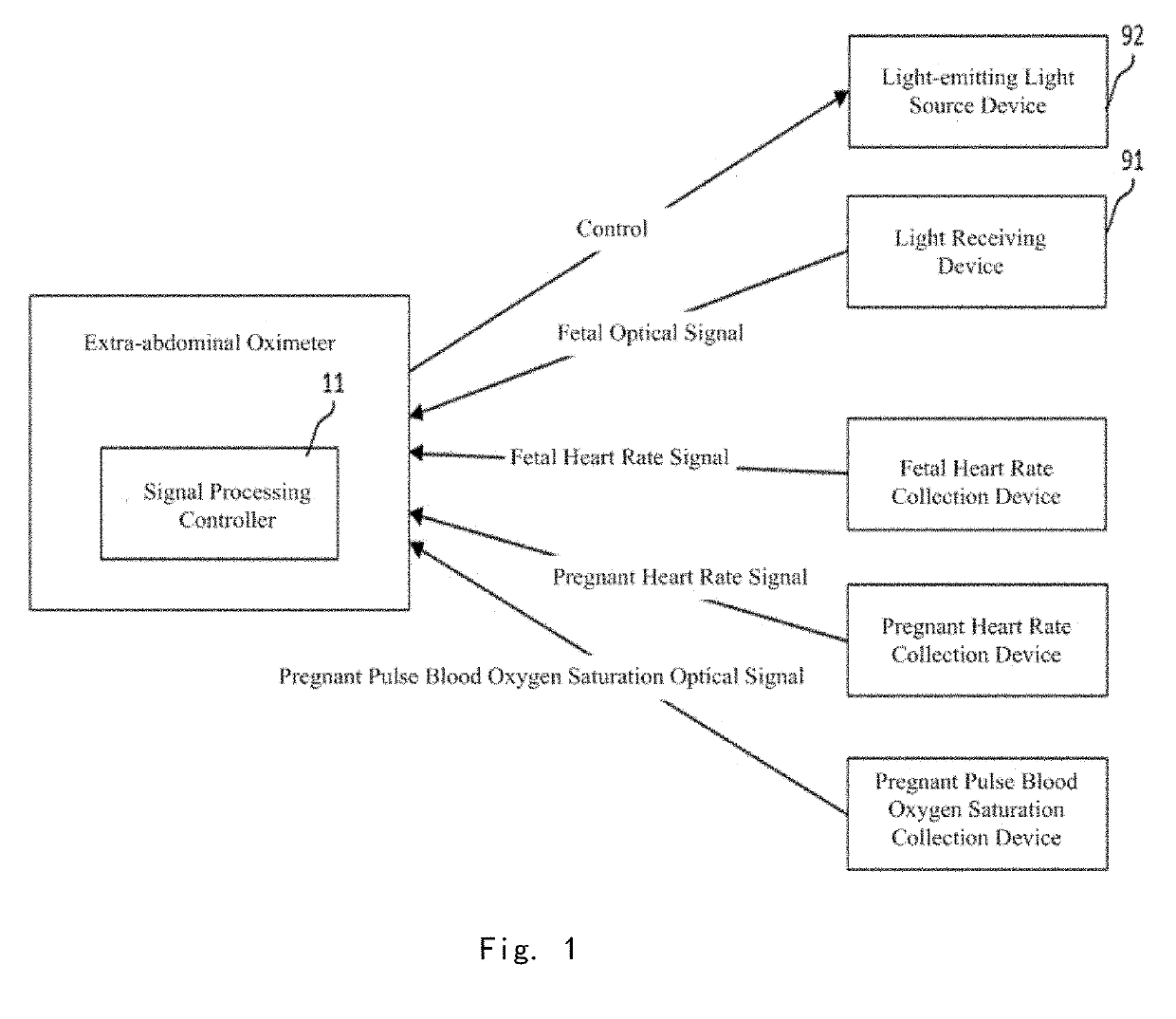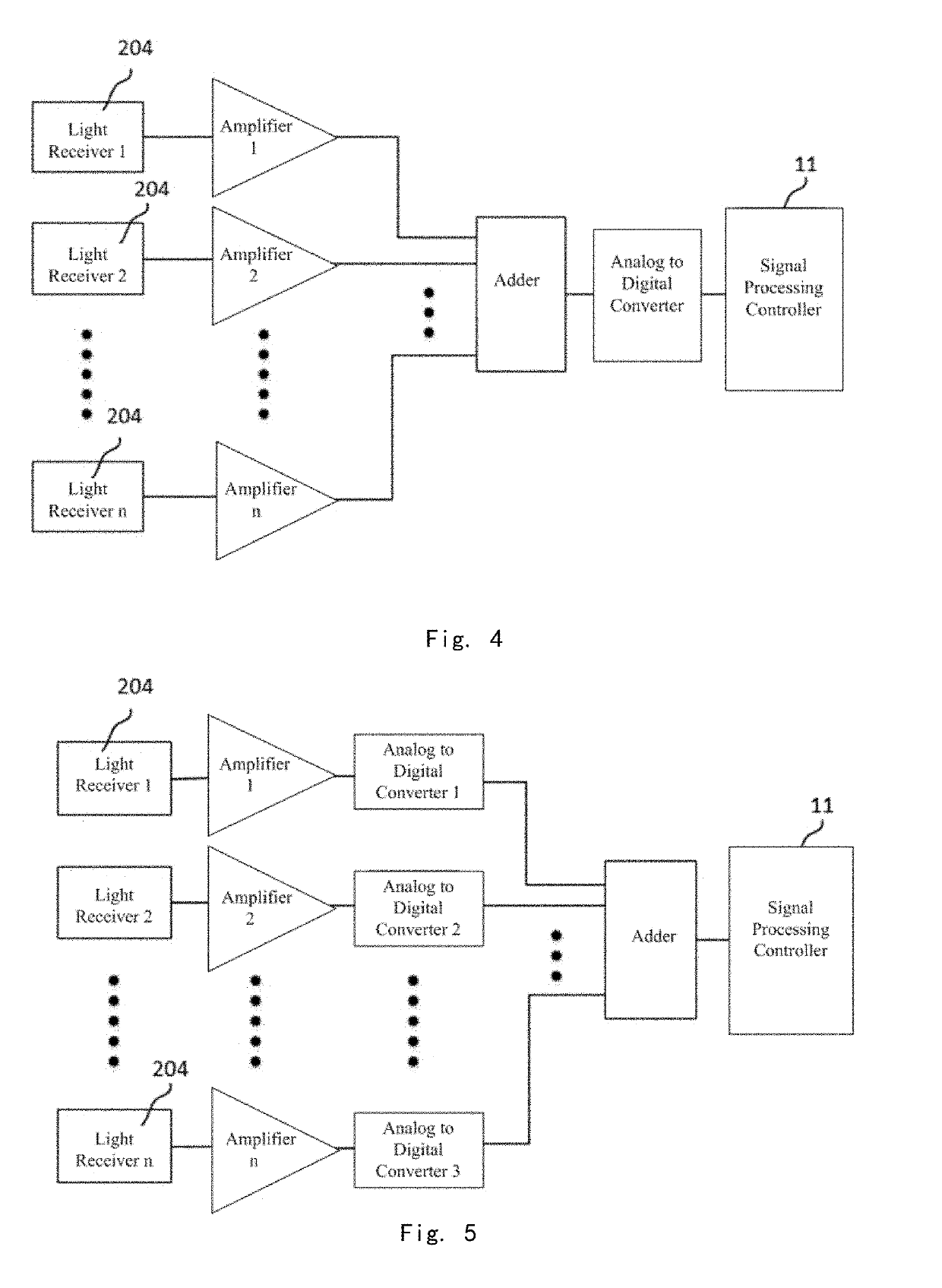Trans-abdominal non-invasive fetal blood oxygen saturation detection device
- Summary
- Abstract
- Description
- Claims
- Application Information
AI Technical Summary
Benefits of technology
Problems solved by technology
Method used
Image
Examples
Embodiment Construction
[0051]Specific embodiments of a trans-abdominal non-invasive fetal blood oxygen saturation detection device of the present invention will be further described with reference to the embodiments given in FIGS. 1 to 21 below.
[0052]As shown in FIG. 1, the present invention relates to a trans-abdominal non-invasive fetal blood oxygen saturation detection device which generally comprises a trans-abdominal fetal oximeter and a signal detection assembly connected to the trans-abdominal fetal oximeter. The trans-abdominal oximeter comprises a signal processing controller 11. The signal detection assembly comprises a light-emitting light source device 92 for irradiating two or more different wavelengths of light into the abdominal cavity of a pregnant woman, a light receiving device 91 for collecting an optical signal related to the fetal blood oxygen saturation collected from the outside of the abdominal cavity of the pregnant woman, and a reference signal detection device for collecting one...
PUM
 Login to View More
Login to View More Abstract
Description
Claims
Application Information
 Login to View More
Login to View More - R&D
- Intellectual Property
- Life Sciences
- Materials
- Tech Scout
- Unparalleled Data Quality
- Higher Quality Content
- 60% Fewer Hallucinations
Browse by: Latest US Patents, China's latest patents, Technical Efficacy Thesaurus, Application Domain, Technology Topic, Popular Technical Reports.
© 2025 PatSnap. All rights reserved.Legal|Privacy policy|Modern Slavery Act Transparency Statement|Sitemap|About US| Contact US: help@patsnap.com



